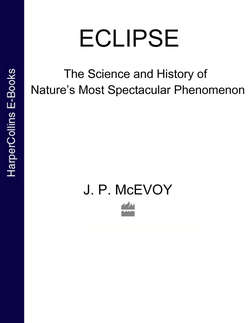Читать книгу Eclipse: The science and history of nature's most spectacular phenomenon - J. McEvoy P. - Страница 9
UNDERSTANDING AN ECLIPSE
ОглавлениеA solar eclipse … is a gift to us from the Creator.
Johannes Kepler, 1605
THE SYSTEMATIC UNDERSTANDING of the motion of heavenly bodies was one of the earliest problems confronting humankind. The development of conceptual models to reproduce this motion is one of the great stories of the history of science.
Even the most casual observer knows that the Sun and the Moon are continuously changing position in the sky. And surely all would agree that the Sun’s motion appears to be regular. But other observations are more puzzling. Many people are surprised to see the Moon high in the daytime sky. Why are bright wandering ‘stars’, the planets, often seen close to the Moon or the setting Sun? Why does the pole star, signposted by the stars of the Plough, never change position? What is the significance of the constellations along the Sun’s path?
How can one make sense of all this? The best way is to use a model of the sky called the celestial sphere, an imaginary surface upon which may be represented the motions of the Sun, Moon, stars and planets as seen from the Earth.
